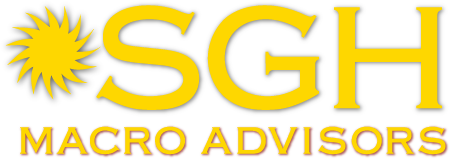SGH Insight
...my opinion is that I doubt Ambassador Tai would use the CSIS forum to break ground on any high-level decision or shift on the existing tariff or trade regime in place, which I think would come in a formal announcement from the appropriate political levels depending on the intended magnitude of the announcement. But I do not pretend to be privy to what Ambassador Tai will say and am interested to hear.
But here is out take on the overall US-China trade/economic situation:
The administration will talk and stand tough on some important issues that the US needs/wants to address, unfair trade practices, transparency, subsidies, Taiwan, human rights, Uighurs, Hong Kong, all with less and less effect, but we believe the goal is to improve and de-escalate in general on economic issues. Why? Growth, economy, markets, consumers, increasing inflation and commodity, supply chain concerns, good old-fashioned profits and lobbying, they don’t like “Trump-era” tariffs really, would like to make the case that they have not been effective, can conduct a multi-faceted (as opposed to the old one track) policy designed to help the economy and working people, manufacturing, but tough on security issues. We have been writing this for a while, more or less, been quite a bit out there on it I have felt.
Often people get more rattled (albeit increasingly less so) by hawkish rhetoric, always they rightly cite the domestic US political difficulties to any easing with China, but which can be overcome with the right concession/cover, so we talk and speculate about how the trade plays out politically. Phase One will be declared dead at some point, I don’t know when, but we have thought there would be movement on trade before year end, which is not so far away now.
Massive, massive corporate lobbying (Chamber of Commerce, US China Business Council, etc.) and financial industry lobbying one might reasonably presume may come into play as well — how do I phrase this delicately! And there has been lots of communication/dialogue between American and Chinese notables, not just private sector participant/sponsored, but with officials as well.
Market Validation
Policy Validation
Bloomberg 10/4/21
The Biden administration will directly engage with Beijing in the coming days to enforce commitments in their trade deal and start a new process to exclude certain products from U.S. tariffs in an effort to help American workers and businesses.
U.S. Trade Representative Katherine Tai is set to speak to Chinese Vice Premier Liu He soon, in what will be the first meeting where she will mainly stress China’s shortfalls in the agreement struck under former President Donald Trump.
Katherine Tai
“I am committed to working through the many challenges ahead of us in this bilateral process in order to deliver meaningful results,” Tai said in a speechat the Center for Strategic and International Studies in Washington on Monday. “But above all else, we must defend -- to the hilt -- our economic interests.”
While the Biden administration won’t take any tools off the table when dealing with Beijing, it doesn’t intend to escalate the trade tensions, an administration official said in a call with reporters. The official acknowledged that China may not change its practices and therefore the U.S. needs a strategy that takes that into account.
